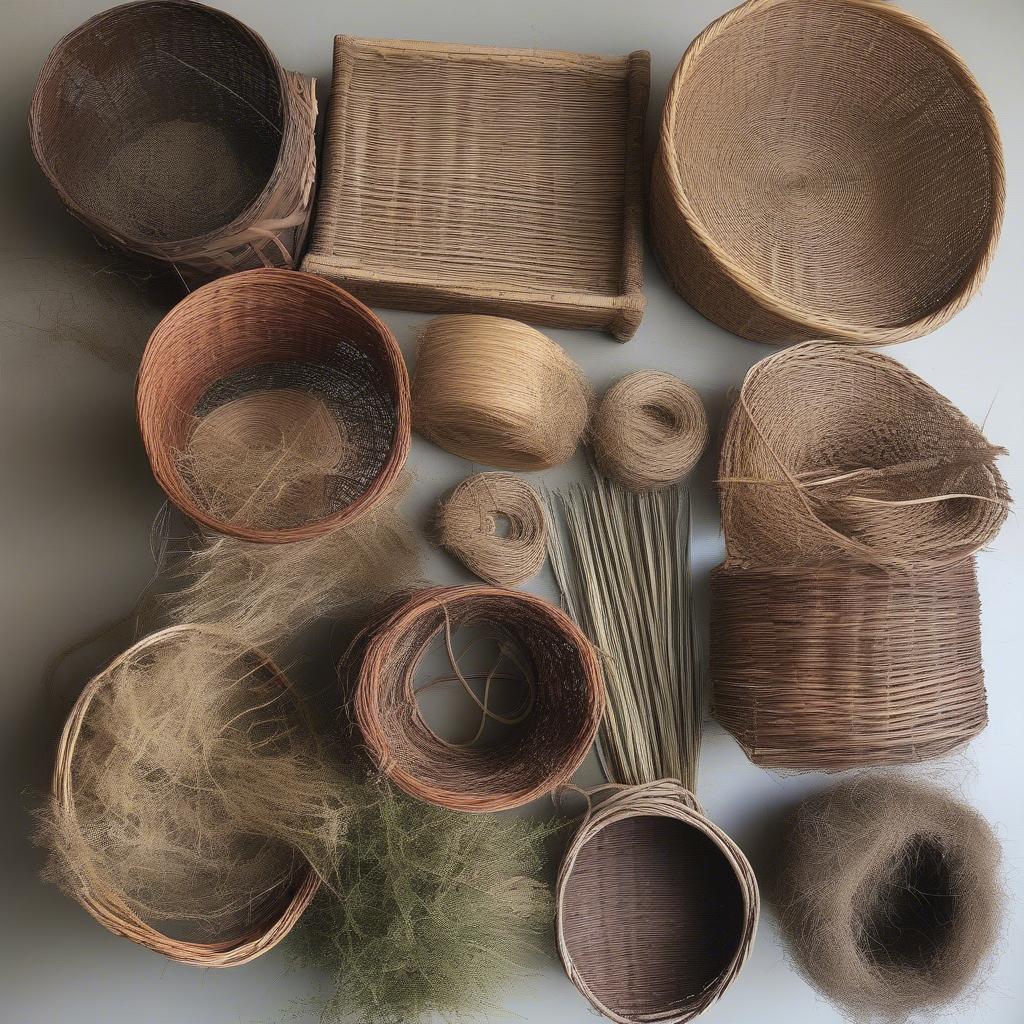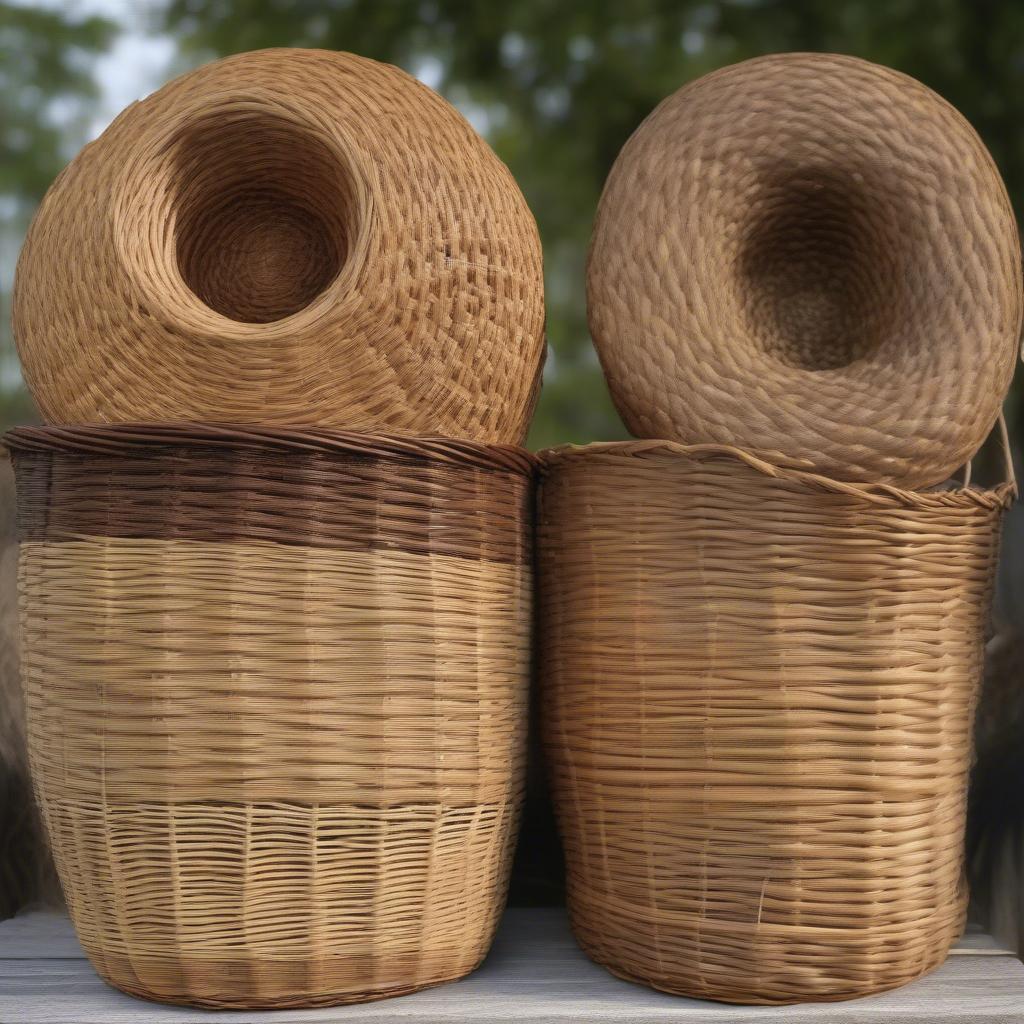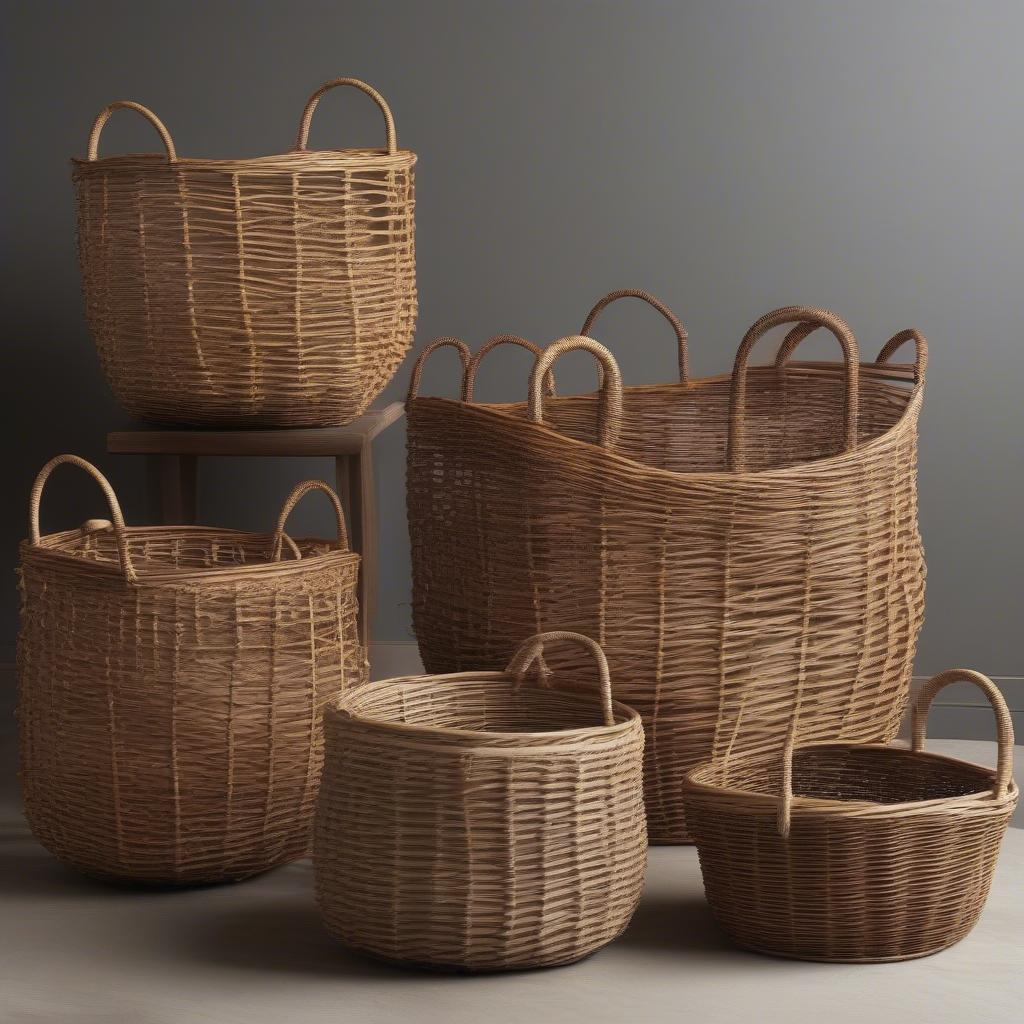Basket Weaving
Most Rot-Resistant Plants for Weaving Baskets
Choosing the right plant material is crucial for creating durable and long-lasting woven baskets. If you’re looking for materials that can withstand the elements and resist rot, you’ve come to the right place. This article explores the most rot-resistant plants for weaving baskets, offering valuable insights into their properties and uses. We’ll cover everything from harvesting techniques to the unique characteristics that make these plants ideal for basketry.
 Rot-resistant basket weaving materials like willow, reed, and seagrass.
Rot-resistant basket weaving materials like willow, reed, and seagrass.
Understanding Rot Resistance in Plants
What makes a plant rot-resistant? It comes down to the plant’s natural composition. Some plants contain oils, resins, or other compounds that deter fungal growth and insect damage, the primary culprits behind rot. Others have dense, tightly woven fibers that make it difficult for moisture to penetrate, thus slowing down the decomposition process.
Knowing which plants possess these qualities is key to selecting the best materials for your basket weaving projects. Whether you’re a seasoned basket maker or just beginning, understanding rot resistance will help you create baskets that stand the test of time.
 Comparing the rot resistance of different plant materials used in basketry.
Comparing the rot resistance of different plant materials used in basketry.
Choosing the Right Plant for Your Project
Selecting the right rot-resistant plant depends on the intended use of your basket. For example, a basket intended for outdoor use requires a more robust material than one designed for displaying dried flowers indoors. Consider factors such as exposure to moisture, sunlight, and potential wear and tear.
Do you want a basket that can withstand harsh weather conditions? Or are you looking for something more delicate and decorative? Understanding your needs will guide you towards the perfect plant material. For some inspiration, check out these railing planter basket weave designs.
Top Rot-Resistant Plants for Basket Weaving
Several plants stand out for their exceptional rot resistance, each offering unique advantages for basket makers. Let’s delve into some of the most popular choices:
- Willow: Known for its flexibility and strength, willow is a classic choice for basket weaving. Its bark contains salicin, a natural preservative that helps protect against rot.
- Rattan: This tropical vine is incredibly strong and durable, making it ideal for larger baskets and furniture. Its natural oils contribute to its rot resistance. You can find rattan used in various products, including beautiful railing planter basket weave hanging planters.
- Seagrass: This aquatic plant is naturally resistant to saltwater and moisture, making it a great option for baskets that might get wet.
- Cedar Bark: The bark of cedar trees is highly resistant to decay and insects due to its natural oils. It’s often used for coiled baskets and adds a beautiful reddish-brown hue.
 Examples of baskets made from willow, rattan, and seagrass.
Examples of baskets made from willow, rattan, and seagrass.
“When choosing a material for basket weaving, consider the longevity of the piece,” advises renowned basket artist, Emily Carter. “Opting for rot-resistant plants like willow or rattan ensures your creations can be enjoyed for years to come.”
Harvesting and Preparing Rot-Resistant Plants
Proper harvesting and preparation techniques are crucial for maximizing the rot resistance of your chosen plant material. For example, willow is best harvested in the dormant season when the sap is down. Rattan, on the other hand, is typically harvested year-round.
Tips for Harvesting and Preparing Your Materials:
- Research the best time to harvest: The optimal harvesting time varies depending on the plant.
- Use sharp tools: Clean cuts promote faster drying and reduce the risk of fungal growth.
- Dry your materials thoroughly: Proper drying is essential for preventing rot.
Looking for a unique weaving material? Explore the possibilities of chicken wire basket weaving.
“Drying your materials properly is the most crucial step in ensuring rot resistance,” says John Miller, a master weaver with decades of experience. “Air circulation is key. Don’t overcrowd your drying racks, and allow ample time for the moisture to evaporate.”
Conclusion
Selecting the most rot-resistant plants for weaving basket is paramount for crafting durable and long-lasting creations. By understanding the properties of different plant materials and employing proper harvesting and preparation techniques, you can ensure your baskets withstand the test of time. Explore the natural beauty and durability of these plants, and create baskets that will be treasured for years to come. Check out these impressive basket weave fence panels for further inspiration.
FAQ
- What is the most rot-resistant plant for basket weaving? While several options exist, cedar bark and rattan are among the top contenders due to their natural oils and dense fibers.
- How can I tell if a plant is rot-resistant? Look for plants with dense fibers, resins, or oils. These characteristics often indicate a natural resistance to rot.
- How do I prepare rot-resistant plants for basket weaving? Proper drying is crucial. Ensure your materials are thoroughly dried in a well-ventilated area.
- Can I use non-rot-resistant plants for basket weaving? Yes, but these baskets might require special care and won’t be as durable outdoors.
- Where can I find rot-resistant plants for basket weaving? You can find many of these plants online, at craft stores, or through specialty suppliers. Explore options like this better homes and gardens 84 inch basket weave panel.
- How do I maintain my woven baskets to prevent rot? Keep your baskets dry and store them in a well-ventilated area. Avoid leaving them exposed to excessive moisture or direct sunlight for extended periods.
- Are there any other techniques to improve rot resistance? Some weavers apply natural sealants or preservatives to further enhance rot resistance.
When you need assistance, please contact us at Hanoi, Vietnam or Tech Avenue, Suite 12, San Francisco, CA 94105, USA. We have a 24/7 customer service team.
